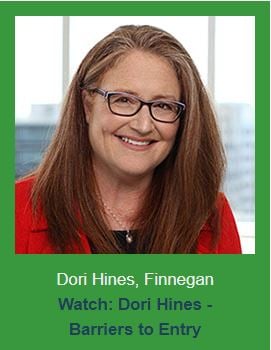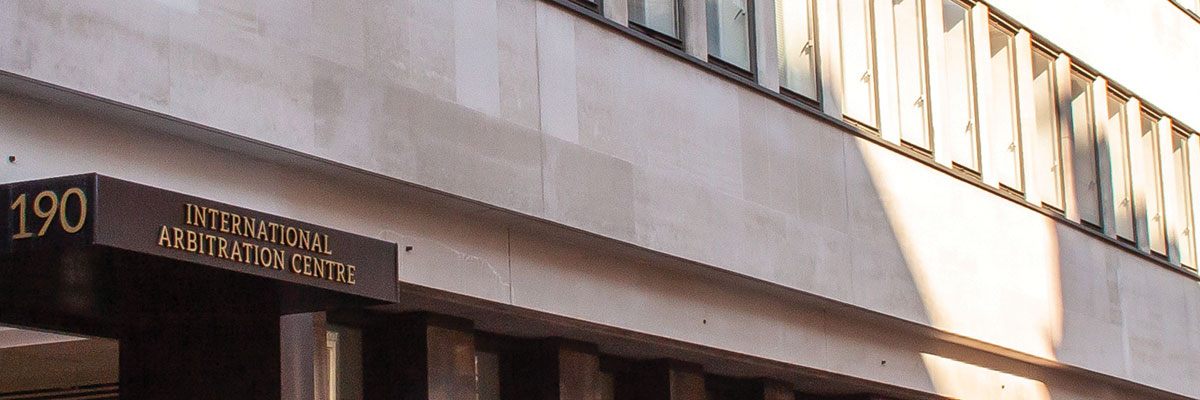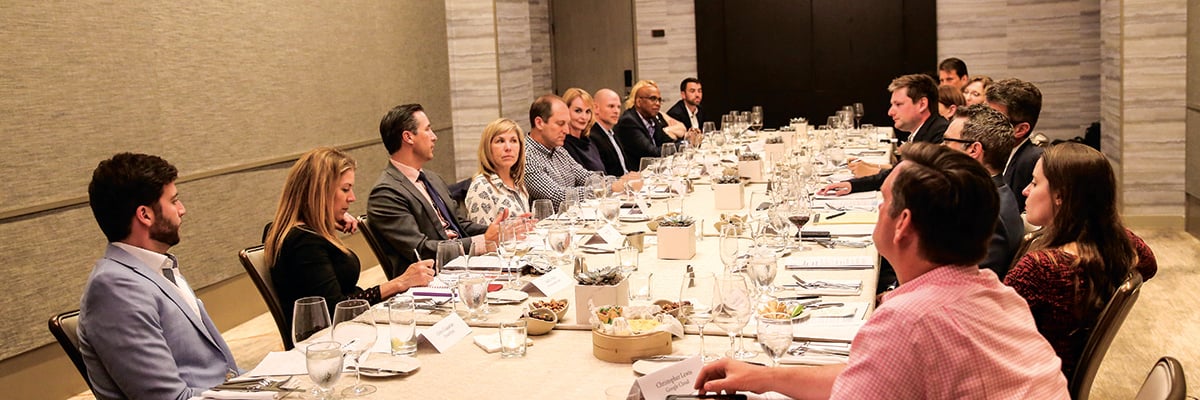‘There is no reason why good cannot
triumph as often as evil. The triumph of
anything is a matter of organisation’
– Kurt Vonnegut, The Sirens of Titan
When looking for good in the world, corporate governance law is perhaps not the most obvious place to train your eye. However, there is a sizeable band of corporations – thousands, in fact – who have opted to start just there, using corporate governance as a springboard to the greater good.
Shareholder primacy, often cast as the villain in corporate scandals or blinkered business decisions, operates on the theory that the job of directors and management is to maximise return to the investor. In turn, corporate law is traditionally viewed as a contract between corporations and investors that the company will, in the balance of law, deliver the highest return.
‘But that’s really an assumption and not a fact of life,’ says Rick Alexander, corporate governance expert and former corporate attorney in the US corporate mecca, Delaware.
A benefit corporation is a corporate entity which includes certain positive impact requirements among its legally defined goals, allowing corporates to reject shareholder primacy in favour of a governance model that permits balancing the interests of other stakeholders – like workers, customers and communities. Maryland became the first state to specifically legislate for these kinds of corporations in 2010, and 30 others have since followed suit.
In the early 2010s, Alexander had been practising transactional law for 25 years and was responsible for maintaining Delaware’s corporate statute when he was approached by B Lab, a non-profit that operates a certification scheme for companies based on environmental and social responsibility.
‘They wanted us to adopt a benefit corporation statute in Delaware. And to be honest, we thought it was kind of cute, but not really serious. I was the chair of the council that worked on those issues and so our first reaction was pretty negative,’ he recalls.
‘But they pushed pretty hard and I ended up taking it on as a project to look more seriously at what they were talking about. As I looked into it, I became persuaded that traditional corporate law actually had a lot of assumptions built in that weren’t necessarily supported by any rational economic theory.’
Alexander’s change of heart and subsequent work was instrumental in Delaware’s introduction of public benefit corporation law in 2013. He even left the practice of law to become B Lab’s head of legal policy, promoting the concept of benefit corporations around the world.
Nowadays, B Lab and benefit corporations are still linked – in order to retain B Corp status (B Lab’s certification), companies must have a corporate structure that rejects shareholder primacy which, in the US, will often mean incorporating as a public benefit corporation. You don’t need to be a B Corp to be a public benefit corporation, although the two frequently go hand in hand – and are often confused.
Keeping your commitments
Among the roster of companies opting to incorporate as public benefit corporations, there are some big names. Global creative crowdfunding platform Kickstarter is one.
‘For Kickstarter, this was always the founders’ ethos,’ explains general counsel Christopher Mitchell. ‘They were not about, “Hey, let’s make our money on an IPO or sale of the company.” I like the fact that we are a very socially and politically active organisation. I think that goes hand in hand with being a public benefit corporation – being very aware of what is going on in the world, how it affects our community, how it affects your business and then what are the appropriate steps to dialogue about that and to get involved.’
When the legislation came along, the company felt that it was the perfect vehicle to crystallise Kickstarter’s commitments. Public benefit corporations must lock in a stated public benefit (or benefits) in their charter.
‘We are a for-profit entity, we operate like any normal business. However, it’s like having a double bottom line. What are you focused on, what does good look like, what does success look like, what are you working towards? As you’re making decisions as an organisation, what behaviour do you take, what actions do you take, what areas do you support? If you think about a lot of other organisations, their main focus is making money. Well, what if it wasn’t just that?’ says Mitchell.
‘What about if you said, “Well these other two or three things are important to us, and this is how we measure success”. Commitment to the environment and bringing creative projects to life are all part of that mandate. I think a lot of non-public benefit corporation organisations aspire to those things, but a lot of times those other goals become secondary to profit maximisation.’
Interestingly, Kickstarter’s shareholders unanimously backed the conversion to become a public benefit corporation. It could be that some investors believe they are looking at a generational shift of corporate values, and the public benefit corporation sits at a unique nexus.
‘It’s a paradox, but it can actually generate more value for your investors – your corporate structure communicates that you are a responsible partner and not bound by law to take advantage of every situation. I think right now we’re at a stage where individual companies are looking at adopting a benefit corporation structure as a competitive advantage, especially among the millennial workforce, or even the generation coming up behind the millennials, who are extremely interested in that sort of concept,’ says Alexander.
If public benefit corporations are aiming to inject virtue into corporate life, could this also trickle down into a better life for their in-house attorneys? Mitchell thinks so.
The North Star
‘I love it because it gives me another reference point. As counsel, you’re considering the law and the objectives of the business and you’re trying to organise those, but when you have these very clear stated commitments and rules, it just provides another reference point to help with the decision-making process. It prevents singular deviation on a project where someone might say, “Hey that’s fine but for this one we’ll just try this.” No, these are commitments, they’re set in stone,’ he explains.
‘It’s absolutely fantastic to have this North Star and this very clear statement driving alignment internally. It’s not just you’re the GC and you’re an outlier. You can point to the charter and say: “This is what we committed to be.”’
‘When it comes to a situation like dealing with a supplier who may not be performing but if we were to walk away, hundreds of their employees would lose their jobs, we look much further than the financial impact of the decision and often make what might seem like an unorthodox choice because it could cost us more in the end,’ adds Hilary Dessouky, general counsel of outdoor apparel company Patagonia, which incorporated as a benefit corporation in California in 2012.
‘At Patagonia, people and planet come first and that is a great foundation for decision making. It adds complexity because there are so many different factors to consider and that can be hard at the beginning. But it’s like a muscle that you have to exercise, and when you see the results, you want to keep working on it.’
Building muscle
For Laureate Education, becoming a public benefit corporation took a little heavy lifting for the incumbent GC’s predecessor. In 2015, the for-profit network of higher education institutions changed domicile from Maryland to take advantage of the shiny new Delaware law. Maryland had its own similar statute, but as the PBC structure had gained traction, model legislation was developed to address thorny issues of fiduciary duty and shareholder liability, and Delaware followed this trend – which appealed to Laureate when it decided to reincorporate.
‘I think any time you’re thinking about making a change in your legal status, the general counsel is critical. The GC has got to understand what’s required and has to be the one to take a hard look at the organisation and ask “Is it really in our best interests to do this, can we really be a public benefit corporation, what is that going to mean for us?” There are going to be legal requirements, the board of directors is going to have to understand what this means, they’re going to have to feel comfortable with it, they’re going to have to vote for it,’ says Victoria Silbey, CLO of Laureate since 2017.
The first public benefit corporation in California
Hilary Dessouky, general counsel of Patagonia, explains what being a benefit corporation means for the outdoor apparel company.
‘We have a 40-year-long history of environmental conservation and activism and, from 1991, the company’s mission statement was: build the best products, cause no unnecessary harm and use business to inspire and implement solutions to the environmental crisis. We recently simplified our mission statement to reflect the urgency of the crisis we’re facing, to just: we’re in business to save our home planet.
Our values are so deeply ingrained in everything we do, for us the risk would be not being a public benefit corporation.
We have gotten very specific in our articles of incorporation about what we’ll do to create public benefit and have listed six areas of focus. One of them is that we give away 1% of sales to environmental non-profits, and we’ve given away more than $100 million since we started the programme. We also just committed to give away $10 million from the 2017 irresponsible corporate tax cuts.
We work really closely with the groups that we support through campaigns, advocacy and activism, and that also culminated in working with our grantees and the Native American community to help establish the Bears Ears National Monument. On December 4, 2017, President Trump issued an executive order purporting to reduce the monument by 85% and Grand Staircase-Escalante National Monument by more than half. Our benefit corporation structure provides a requirement for us to take certain actions and so, in response, Patagonia, along with a coalition of grassroots groups, filed a lawsuit in the DC District Court challenging the President’s action based on the premise that The Antiquities Act of 1906 grants the President the authority to create national monuments but not to reduce or rescind them. As a benefit corporation, we’re doing everything we can to help combat climate change and we have an obligation to our employees, to our community and to the environment to actually take that action.’
The general counsel also has a vital role to play in drafting the public benefit purpose that the company is nailing to its mast.
‘It needs to be both specific enough to really talk about what you do but broad enough to last for a long time, as a company may change emphasis and strategy. You have to think about it as almost a legal contract, so it’s critical that the GC is part of the decision-making process around that purpose,’ she says.
The Laureate team eventually settled on ‘To produce a positive effect for society and for persons by offering diverse educational programmes, both on premises or campuses located in the communities we serve online’.
‘If we are acquiring or divesting a college or university somewhere on the globe, part of the questions that we ask ourselves is whether this will be good for students. Can we offer students more – better access, better educational opportunities, better outcomes, better ability to get jobs, to get salaries that can support them, for example. We are constantly evaluating those outcomes, doing studies to see how our graduates fare. We’d probably do that anyway, but being a PBC gives us the context in which to put these questions and to make these decisions,’ explains Silbey.
Investor reception
But is it really possible to balance profitability with a commitment to the greater public good?
CircleUp, a company that helps consumer product start-ups to raise equity, thinks so.
It applied machine-learning software to scoring like-for-like strength, reach, growth and intensity of consumer brands in June 2018, finding that 93% of B Corps (distinct from public benefit corporations, but connected by sustainable ethos) scored above the average. The software also reported a 49% growth in sales, three times more than the category cohort.
But not all attempts to marry a sustainability stamp and profitability have escaped a bruising, particularly in the public realm. After the board ousted the CEO of e-commerce platform Etsy in 2017 amid swirling reports of overspending and falling share price, the vocal champion of stakeholder culture and then B Corp released the following statement from its newly installed CEO, Josh Silverman:
‘Since 2012, Etsy has relied on third-party certification, known as B Corp, as one of the ways we demonstrate our public commitment to running a sustainable, socially responsible business. We are proud of our B Corp certification, and of our track record of improving our B Corp score after each impact assessment.
‘One of the requirements of B Corp certification for corporations incorporated in Delaware is that a company must change its corporate structure from a C Corporation to a benefit corporation. As we have said publicly over the past year, Etsy will not seek conversion to a benefit corporation by the December 2017 deadline because converting is a complicated, and untested process for existing public companies.’
Etsy declined to be interviewed for this piece, but B Corp’s Rick Alexander is reluctant to concede that its specific situation has any reflection on the reception of the PBC status among investors.
‘Part of our certification is that at the end of a grace period, if they wanted to keep the certification, they would have had to become a benefit corporation and that would have meant getting a two-thirds vote from their shareholders. At that time they were kind of in a struggle with their shareholders, they had some not-good performance, there were hedge funds in the stock and eventually there was a whole turnover of management. That was not a company that had a problem with being a PBC, it was a company that wasn’t in a position to get a two-thirds vote on anything, let alone PBC status,’ he explains.
Certainly the experience of Laureate Education, the first company already with public benefit corporation status to make an IPO, has been relatively smooth – though Silbey admits there was a little trepidation beforehand.
‘One of the concerns we had was that public markets would not be receptive – it was kind of unchartered territory. I don’t think that that’s turned out to be the case – I don’t think we have investors who aren’t investing or shareholders who aren’t shareholders because we are a PBC. But we really didn’t know at the time,’ she says.
‘We definitely had to explain it. It’s not that common in general and nobody was public beforehand, so when we filed our IPO doc and our 10-Ks since, we had to very carefully explain what it means and why it ties into our overall mission. We needed to be very clear and anticipate the questions that we might have: Does that mean that there’s not going to be good shareholder return, does that mean that you’ll put everybody else ahead of shareholders? We needed to think through what those questions might be and then to address them both in our written documentation and in other conversations with investors.’
Because public benefit corporations are obligated to make decisions that honour a specified social or environmental purpose, they can be held to account for not doing so. The Delaware statute has therefore built in protection for companies so that such lawsuits can only be brought by shareholders owning more than 2% of the company, and that no monetary damages can be obtained, only assurances that the company will improve.
‘For the most part what the statute does is eliminate risk. It makes it easier to operate in a way that’s socially and environmentally conscious, so we reduce the risk that anyone would ever sue you for that,’ says Alexander.
Adds Silbey: ‘If you are carefully considering the decisions you’re making in both the long term and short term, I think that the risk is manageable. We have thought about it and when we do governance training for our senior leaders and for our board members this is an area that we cover – and we get some thoughtful discussion about it.’
A moment of reflection
Having public benefit corporation status has reporting requirements, of course, although at once every two years in Delaware, these are not too onerous.
‘On one hand this is a statement to the public but also for ourselves, it’s a moment of reflection. How well did we actually do? It’s an important piece of feedback,’ says Mitchell.
Like Kickstarter, Laureate is also a B Corp, and B Lab’s granular auditing process provides a similar opportunity for introspection.
‘For the B Corp status, we were concerned that it might be too hard. To get audited on things like environmental footprint and supply chain issues was very new for us and we didn’t really know how we were going to do. We’re not making sneakers, so we’re not checking our supply chain more regularly,’ explains Silbey.
‘So this was a brand new horizon for us, but it’s been great, actually. Because it goes all the way down to a campus level review, we get really good insight into our institutions and how things are going and it helps us then make decisions when we engage vendors – it gives a framework to think about choices we’re making throughout our network of institutions.’
The reality is that a public benefit corporation status is unlikely to appeal to a company that has not placed an environmentally or socially conscious agenda at the heart of its offering, like Kickstarter, Laureate and Patagonia have. The jury is out, however, on how an ethical agenda might be protected in the event of a takeover, especially in the case of rolling back commitments – however legally.
‘In a hostile takeover there’s a limited amount that can actually be done, and I haven’t really thought through should we have a poison pill specifically related to PBC status,’ says Silbey.
‘But certainly with respect to a non-hostile transaction, our directors would try to weigh the different questions that we have as a PBC about commitment to students and communities and outcomes, so we would balance all of that with other fiduciary duties and shareholder considerations.’
A sustainable future
Public benefit corporation status is, fundamentally, optional. But what if it wasn’t?
Senator Elizabeth Warren, Democrat and 2020 Presidential hopeful, last year announced the Accountable Capitalism Act, which strikes at the same target as the public benefit corporation: shareholder primacy.
‘In the early 1980s, America’s biggest companies dedicated less than half of their profits to shareholders and reinvested the rest in the company. But over the last decade, big American companies have dedicated 93% of earnings to shareholders – redirecting trillions of dollars that could have gone to workers or long-term investments. The result is that booming corporate profits and rising worker productivity have not led to rising wages.’
A key plank of the Act calls for corporations with more than $1bn in annual revenue to obtain a federal charter as a ‘United States corporation’, obliging directors to consider the interests of all corporate stakeholders.
‘This approach is derived from the thriving benefit corporation model that 33 states and the District of Columbia have adopted and that companies like Patagonia, Danone North America, and Kickstarter have embraced with strong results’, stated Warren.
The road to legislation, like government, is a long one, and much is in the balance with this Bill. But, if a corporate governance trend is turning heads – and public opinion – there could be interesting times ahead for large companies.
All the more reason for the general counsel to ensure they are involved in any process of governance change or audit from an early stage – whether that’s becoming a public benefit corporation, B Corp, or a future permutation.
‘Sometimes at B Lab we’ll be dealing with a sustainability group in a company, and they’ll say “Let’s do all the other stuff and then we’ll do the legal” – because nobody wants to call the GC!’ says Alexander.
‘We encourage people to socialise the issue early and to make sure that there’s board-level discussions about certification and that the board understands the legal piece. The GC is going to be key in the boardroom’.















